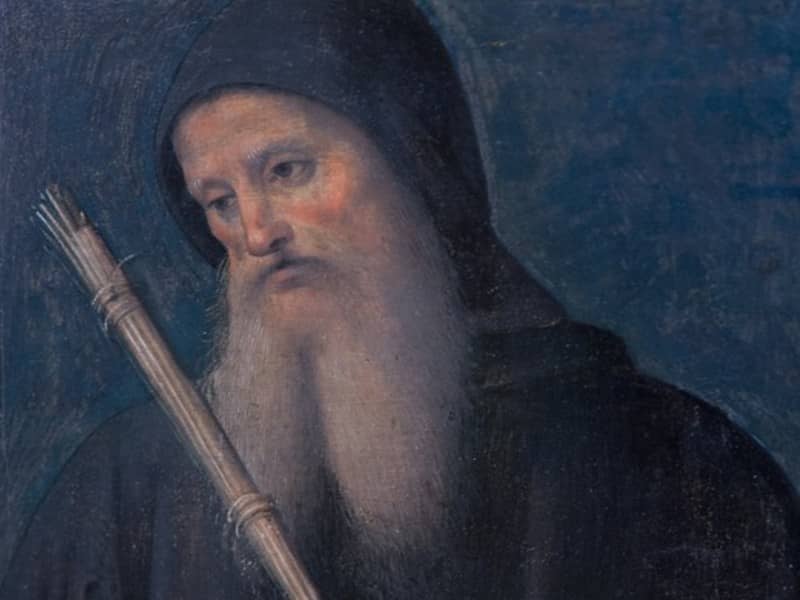
One of the most prevalent Protestant criticisms of the Catholic Church is that its theology encourages idolatry through the worship of human saints.
We’re going to take a look at why this simply isn’t the case, and what Catholics really mean when they talk about these saints. Let’s start by taking a look at the common arguments employed to condemn this Catholic practice.
Idolatry is, indeed, condemned throughout the Bible, in both the Old and New Testaments—we see this in everything from the Ten Commandments to the Gospels. The verse that is most often employed to argue against the idea of praying to the saints is Timothy 2:5, which reads, “There is one God and one mediator between God and mankind, the man Christ Jesus.”
Hebrews 4:16 tells us that we may “With confidence draw near to the throne of grace,” which implies that those who pray to God may address Him directly, and without fear, and without the need to communicate prayer through any other source.
So what would the Catholic response to these verses be? Well, they’d agree with them!
Here’s a shocker. Catholics don’t actually pray to saints. To debunk this myth, let’s start by defining what a saint is.
The word “saint,” comes from the Latin word, “sanctus,” which translates to—you guessed it—“holy”. The New Testament refers to all Christians who follow the teachings of Jesus as saints. In scripture, Paul addresses his letters to “the saints” of the cities he write to, such as is the case in Ephesians and 2 Corinthians. Calling these people “saints” simply acknowledges that these people who followed Christ’s teachings had been transformed in a way that made them different, made them holy.
Sainthood, then, doesn’t scripturally refer to angelic beings or perfect people or supernaturally devout men and women. Nobody is Mother Teresa—not even Mother Teresa. No—the word refers to ordinary people who have faith and Christ, and live out that faith through virtuous lives.
Those upon whom Catholicism has bestowed the proper title of saint, though, have lived lives of extraordinary virtue, far beyond what the ordinary Christian might accomplish—these are people who were, in life, the ultimate example of moral and theological virtues.
So although “saint” applies to all Christians, the actual Catholic title of “saint” applies more narrowly to the most extraordinary of Christians.
To officially gain this title and become a saint, a believer must go through the process of canonization, in which the Catholic Church declares a person a saint after a formal review process of their life, as well as any miracles associated with the person.
Once recognized as saints, these people are still regarded as fallible human beings—complete with flaws. The key here is that it is not truly the person being canonized, it is their example. Canonization does not make a person immune from judgment if some of their actions in life were unwise.
Now, onto the subject of praying to these saints—as we’ve learned, Catholics do not do this. They do not pray to human beings. They pray through them. They don’t believe the saints are divine—they’re believed to be human.
Because of the saints’ commitment to Christ, and because they were largely successful in living an exemplary life, Catholics believe these saints find favor with God, and so can intercede on their behalf.
Still feel like this feels a little idolatrous? Let’s consider something for a moment.
Have you ever called a church’s prayer line? Have you ever asked a particularly devout friend, relative, or pastor to pray for you?
Then you’ve practiced a little Catholic theology, yourself.
But Catholics bypass the prayer line and go straight for the heavy hitters—instead of getting Aunt June to pray for them, they ask for St. Paul the Apostle, St. Peter, or the very mother of Jesus Christ, herself, Mary, who transcends all others.
But a further criticism of the Catholic idea of saints extends to the religious icons and statues that are often present within Catholic homes and churches—figures and paintings representing the saints. Is this not idolatrous?
Again, let’s think about it.
Have you ever held onto a photograph of a deceased loved one—someone you care for deeply and profusely? Do you keep that picture on your nightstand or dresser? Do you, perhaps, sometimes speak to that photo, wishing it a good morning or evening, or simply expressing that you miss the pictured loved one?
Would you, then, be guilty of worshiping that photo? Would you be guilty of idolatry?
Of course not. You’re focusing on what that photo reminds you of—you’re celebrating the love and joy that this person once gave you.
This is the function of the images and statues of the saints—they remind Catholics of the virtues these saints once embodied, and for their unique and brave responses to the calling of God, which often ended in their own martyrdom.
Christians in heaven are good at praying. Really good. They’re veterans. They’re your university’s alumni when you’re still a freshman, pulling strings and asking favors for you. They’re a Catholic’s all-star ministry team.
Many might say that they’d never want to pray to “dead people,” but is Heaven truly a “dead” place? No—it’s more alive and more real than what we know in life.
And so Catholic theology, from this knowledge, asserts that we can ask those in Heaven to intercede on our behalf, to pray for us in ways in which we are unable.
In essence, prayer is not worship. In the case of the saints, it is merely communication, a request for the saints in heaven to go to God with the prayer’s requests.
God is still God. He is the beginning and the end, the answerer of all prayers. It is to Him that all Catholic prayers are ultimately directed, even those that might go through the saints.
The saints are simply a part of a believer’s family in Christ—a family who loves them, cares for them, and is willing to pray to God on their behalf.

